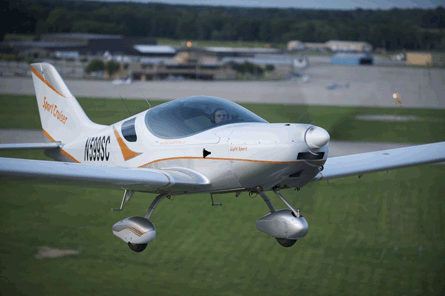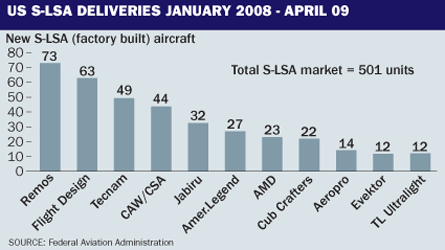Piper and Cessna are like yin and yang when it comes to training aircraft: the counterbalance to the high-wing Cessna 152 in the 1980s was the low-wing Piper Tomahawk or Cherokee 140. After a long hiatus in new products at both companies, the late 1990s saw the four-seat high-wing Cessna 172 matched by the four-seat low-wing Piper Warrior.
Now that Cessna is freshly producing its own two-seat factory- built light sport aircraft called the SkyCatcher, well-equipped at $130,000 a copy, will Piper launch itself into the newest and lowest market segment?
The answer could come as soon as next week when light sport aircraft enthusiasts and manufacturers gather for the annual US sport aviation expo event in Sebring, Florida.
The buzz in Europe is that Piper has become a 49% owner of light aircraft manufacturer Czech Sport Aircraft (CSA), the successor to the bankrupt Czech Aircraft Works. CSA is owned by Slovak investment group Slavia Capital. Neither side has revealed the purchase price, but local business daily Hospodárské noviny has put it at around $30 million.
 |
|---|
© Chris Happel |
CSA's low-wing two-seat SportCruisers will be sold as Pipers, and distribution of both companies' products will be merged, creating the world's largest maker of light aircraft, says Slavia Capital manager Martin Zikes.
Piper, while admitting to having had a detailed look at the company over the past few months, is otherwise mum on the topic and will neither confirm nor deny reports of its link with CSA.
Currently, CSA's three SportCruiser variants - Club, Professional and Tourer - are assembled in the east Moravian town of Kunovice from parts manufactured in Slovakia. CSA plans to produce 450 aircraft this year and as many as 700 yearly by 2011.
According to the Light Aviation Manufacturing Association (LAMA), there were a total of 1,688 fixed-wing S-LSAs in the USA as of the end of August, and sales over the past 20 months put CSA at the number four slot, behind manufacturers Remos, Flight Design and Tecnam.
LOOKING BACK DOWN
If Piper does go forward with the purchase, it will signal a major shift in policy following a change in management at the top.
Piper, under the direction of chief executive James Bass until his replacement last summer, had been driving to "dominate" the $600,000-2.5 million product range, eliminating production of low-end aircraft.
The new chief executive, Kevin Gould, put in place after Singapore investment firm Imprimis bought 100% of Piper from American Capital in May, has since said he wants to "make the company relevant to current times" and that new models that "address gaps in the product line" are under way.
 |
|---|
While the revenue potential of the aircraft itself might seem a weak stimulus for a capital investment in a still-shaky economic climate, the ability to earn loyal entry-level customers who will remain loyal to the company and eventually buy the $2.2 million PiperJet, the company's flagship offering, is a strong incentive.
LAMA president Dan Johnson says the SportCruiser is a proven product that "matches up" with Piper's existing line. "The danger for them is that this is a new company they're dealing with," he says of Slavia Capital.
He adds that the most of the players in the sector would "wholeheartedly" welcome Piper into the mix, however: "Certainly from the leaders in the industry, they are very pleased that (Piper and Cessna) are getting involved.It validates the category."
Source: Flight International























